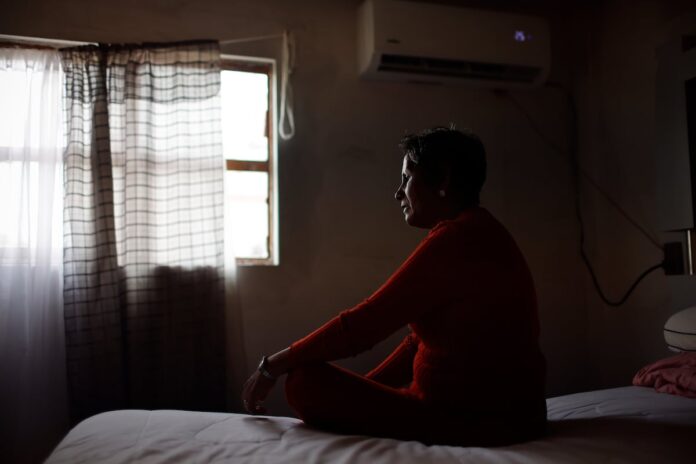“My son dropped dead there,” says Eva María Vázquez. Jaime González was murdered inside a house still under construction, in a humble neighborhood of Irapuato, in the state of Guanajuato, in central Mexico. He was the third son taken from her. Jaime was killed while his mother and her partner, Francisco Arias, were held downstairs at gunpoint, their faces pressed against the ground, their hands tied behind their backs. Before leaving the house, the armed group also took Arias, whom everyone calls Panchito. They did it just in case. They were not sure that they had killed the right person. “What do we do with this old man?” one asked. “Take him, take him,” another said.
Panchito, 54, a searcher for the collective Hasta Encontrarte (Until I Find You), disappeared on June 9, 2025. Nothing is known of his whereabouts. He is one of the 14,790 people who have disappeared in the first year of Claudia Sheinbaum’s government. Disappearances have increased by 72% in Mexico compared to the figure registered during her predecessor and mentor, Andrés Manuel López Obrador’s inaugural year from 2018 to 2019. In some states, such as Baja California, Campeche or Chiapas, the increase is close to 1,000%. The trend is also bad in the state of Aguascalientes, where the number of missing persons has gone from nine to 129, or in the State of Mexico, where disappearances have gone from 83 to 2,135 in the same time frames. All this, while the government celebrates the success of its security strategy.
The beginning of the crisis
Eva María Vázquez pinpoints October 24, 2017, as the date her ordeal began. That was the day her son Gerardo Leiva, 24, was killed on a street in Irapuato. The war in Guanajuato kicked off at that point. The government had failed to intervene in the brutal criminal dynamics in neighboring states like Jalisco. And at that time, a local gang, the Santa Rosa de Lima Cartel, was getting stronger, moving from the extraction of hydrocarbons to challenging the Jalisco New Generation Cartel for its business in extortion, trafficking, and drugs. The conflict between the two cartels sent shockwaves through the state, particularly in its industrial corridor, formed by León, Irapuato, Celaya and Salamanca.
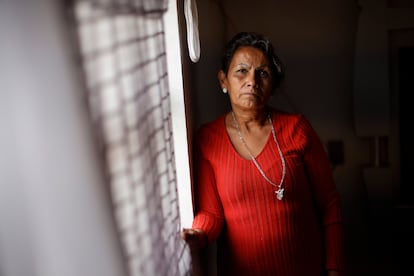
This ongoing gang warfare became a free for all. Since 2018, Guanajuato has been the deadliest state in Mexico, with 11.6% of all Mexico’s murders committed in this region of just over six million. It also has the most clandestine graves, with more than 700. The number of the disappeared persons is dizzying. In seven years, it has gone from 640 to more than 5,300. On the first anniversary of Sheinbaum’s government, almost 1,000 new cases have been registered.
“I hadn’t yet come to terms with Gerardo’s death, when I lost Miguel,” says Eva Vázquez. Little more than four years separated their deaths. A group dressed as police officers entered the house where Miguel González was sleeping on January 20, 2022, and took him away in the early hours of the morning. His mother was recovering from an attack that had occurred in the market where she sold tamales: “They came to kill some kid, but the bullets hit the pot of tamales and the shrapnel bounced back at me. I ended up in intensive care, on the brink of death,” she says.
Miguel’s skull
When Eva recovered, she joined the collective Hasta Encontrarte, which searches for missing persons. Panchito, her partner of 10 years, joined too. Together they combed hills, searched in communal graves, and comforted other families. In February 2023, the Guanajuato Attorney General’s Office called Eva, telling her to come and collect Miguel’s skull. They had had the skull since January 25 of the previous year — in other words, five days after he was taken. The police had found Miguel’s head in Silao, inside a black bag. They did not find the rest of the body. It took them more than a year to notify his mother.
“They showed me photos of a skull that was already just bone. I looked at him and looked at him, because as a child he had an accident at school, when he jumped off a roof and hit his teeth and they got skewed. And when they showed me the photo, I looked at his teeth and for me, it was like I didn’t want to accept it and still to this day I don’t accept it, because we refuse to accept reality, right? If they had shown me a photo from the moment they found his little head, well, logically, my son would still have had some flesh on him. That’s what you ask yourself: why do they only show a decomposed head? Logically, there is a DNA test, which is something you can’t argue with, but for a mother it is still not enough.”
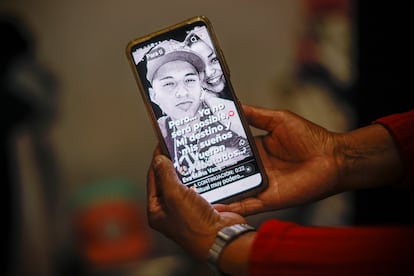
Miguel’s case is not unusual. In the morgue at the Guanajuato Attorney General’s Office, there were 929 bodies until August of last year, almost all of them still unidentified. In the case of Isaac Aarón, his family searched for four years, and all that time he had been held by the Attorney General’s Office. This happens frequently everywhere in Mexico, where a total of 72,100 bodies are held in morgues. The situation has been aggravated by the fact that Claudia Sheinbaum has not moved forward with the strengthening of the National Search Commission initiated by her predecessor, López Obrador.
Panchito and the searchers
A searcher never stops looking. Even when they find their loved ones. There are so many who are missing. Eva and Pancho continued to search for missing persons even after they “found” Miguel. The collective, Hasta Encontrarte, managed to recover more than 230 bodies in Guanajuato in two years.
Panchito was on every search, until Eva — still suffering from her injuries —could no longer accompany him. “One day he got the fright of his life because he came upon a snake. He ran and ran, like a grasshopper, and the snake after him,” laughs Eva Vázquez for the first time. “Immediately the patrol people delivered him to me because he got sick from the fright.”
The collective is now looking for Panchito. “I had hoped that they would release him because Pancho didn’t owe anything. But we don’t know what has happened, if they have him alive, or not,” Eva says.
The United Nations is putting pressure on the Mexican government, but Hasta Encontrarte says that the only thing the Attorney General’s Office has done is hinder the search, to the point of avoiding even giving a copy of the investigation file to the family.
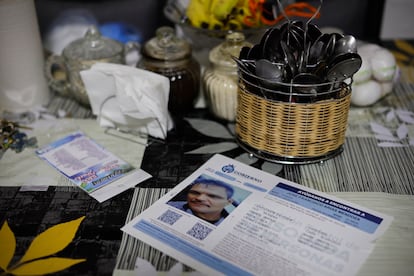
Besides Pancho, there are four other searchers missing in Guanajuato. Six others have been murdered in recent years in the state; 26 since 2010. During Claudia Sheinbaum’s first year, as well as Pancho, searchers Héctor Aparicio disappeared in February in Veracruz, Luz Lara and Óscar Iván Jiménez, in November, also in Guanajuato. “Panchito was my right arm, now they have left me unprotected,” says Eva Vázquez, who fears for her life and also for that of Luis, the only child she has left.
Sheinbaum’s pending business
The Mexican president celebrates the fall in homicides at each anniversary event. It was 30% down in August, compared to the figure left by López Obrador. More than 30,000 people have also been arrested, and thousands of weapons and tons of drugs seized. Sheinbaum insists that her strategy is working. But there is one figure that goes unmentioned: the 133,000 disappeared in the country. It is a number that grows unchecked in the official registry of the Ministry of the Interior.
This data has led the U.N. Committee on Enforced Disappearances (CED) to state that disappearances are “widespread and systematic” in Mexico. The crime also has an impunity rate of 99%. These two figures together make it impossible to know whether state police have participated in the disappearances or if they have allowed criminal groups to carry them out, according to the U.N. All this has led the CED to apply Article 34, which is designed to push a country’s case to the forefront of the U.N. General Assembly.
Sheinbaum’s government has reacted with fury. Public bodies, secretaries, legislators and even the president herself have dismissed the U.N.’s warning. “In Mexico, there is no forced disappearance by the state,” Sheinbaum said, despite the hundreds of cases in which the participation of police officers is proven. Some of these cases, such as the disappearance of the 43 students from Ayotzinapa 11 years ago, have scarcely been addressed by the authorities.
Raymundo Sandoval, founder of the Platform for Justice and Democracy of Guanajuato, argues that the president’s approach to this crisis has been “disastrous… Not only because it has confronted the United Nations, but because it has ignored the recommendations established since 2021 by the CED, especially the one related to establishing a national strategy for the prevention and eradication of disappearances,” he says.
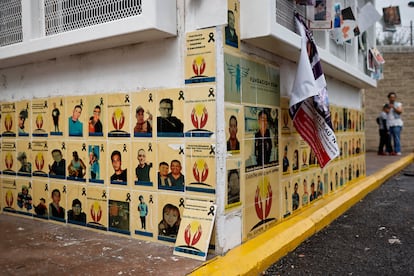
Among the demands the U.N. has been making of Mexico for years is “the urgency of halting the rise in disappearances, searching for those currently missing, and establishing a comprehensive strategy.” “While this sounds simple, Sheinbam’s administration has failed to do so. On the contrary, it has tried, just like López Obrador’s government, to combat the issue of the narrative surrounding disappearances,” Sandoval notes, referring to attempts to reduce the number of missing persons by intervening in official records or the commitment to implementing a biometric CURP (National Identity Document) to search for missing persons, both measures strongly opposed by groups.
When Miguel disappeared, Eva and her family became the talk of the neighborhood. “He was the exception,” the woman says before saying goodbye. “Now, here in the neighborhood, there are five people who have recently disappeared, in addition to Pancho. It’s become routine.”
Sign up for our weekly newsletter to get more English-language news coverage from EL PAÍS USA Edition
